
Spring bulbs: tips and advice for planting your collections
For a colourful spring garden!
Contents
Spring bulb collections are an ideal solution to create a colourful, varied flowerbed with ease! Some collections bring together different species (for example by combining tulips, hyacinths and muscaris), while others declinate a single species into different colourways (for example a combination of tulips ‘China Pink’, ‘Doll’s Minuet’ and ‘Ballerina’, in pink, red and orange tones)! These collections can play on contrasts or, conversely, create subtle harmonies. In any case, they guarantee an explosion of colours in spring! These bulbs are planted in autumn, in light, well-drained soil. Discover all our tips for planting them in your garden.
Why choose bulb collections? What are the advantages?
Bulb collections bring together different species and varieties that combine particularly well, both in terms of flowering period and flower colour and shape. They have been selected for their qualities and visual harmony. Often the best varieties have been chosen to make up these collections! They will guarantee a successful flower bed.
They let you enjoy a fine diversity of bulbs, and thus create rich, colourful beds, rather than planting only one or two varieties, which would give a bed a more monotonous, less natural look. The different plants composing the collection are quite similar in terms of growing requirements and exposure: for example, one collection may gather shade-loving plants to plant in woodland, while another will group sun-loving plants.
Collections come in different styles and moods. They allow you to easily bring a romantic, chic or wild atmosphere to the garden… Presentation photographs of the collections help you visualise the effect you will achieve in the garden.
Some collections bring together different varieties of the same species (for example, tulips), producing a fairly homogeneous effect, while others combine different species (for example, tulips, hyacinths and grape hyacinths), creating a more natural, varied feel.
In short, the main advantages that make us choose collections are: colour harmony, ease of planting, and the varietal diversity these collections offer.
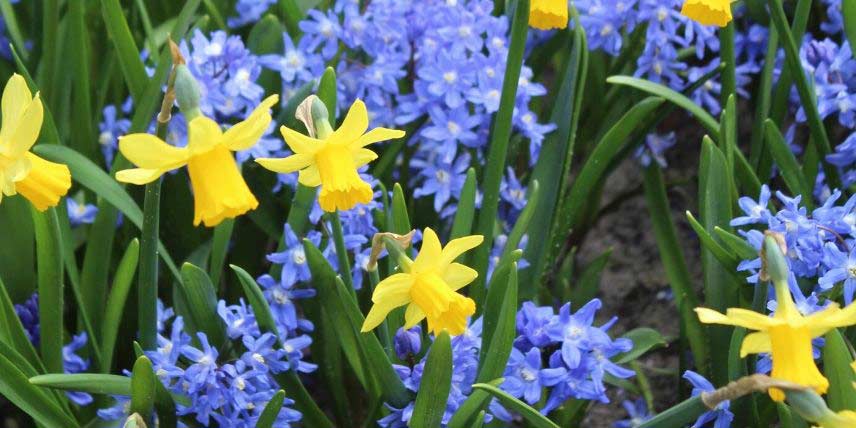
Daffodil ‘Tête à Tête’ and Chionodoxa sardensis
Read also
Planting spring bulbs lateSome examples of collections

Morning Stroll Collection
- Flowering time May, June
- Height at maturity 30 cm
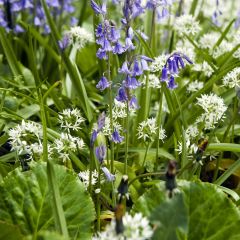
Duo for Naturalizing Wood hyacinth and Wild garlic
- Flowering time April to July
- Height at maturity 40 cm
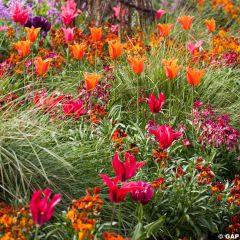
Harmony Carnival of Rio
- Flowering time May, June
- Height at maturity 45 cm
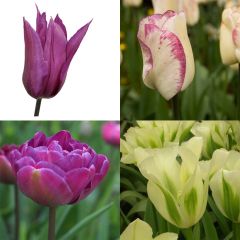
Bucolic Tulip Collection
- Flowering time May, June
- Height at maturity 50 cm
Discover other Spring bulbs A to Z
View all →Available in 2 sizes
Available in 1 sizes
Available in 1 sizes
Available in 1 sizes
Available in 1 sizes
Available in 1 sizes
Available in 1 sizes
Available in 1 sizes
Available in 1 sizes
Available in 1 sizes
How to plant collections of bulbs?
Spring-flowering bulbs are planted in autumn, from September to November.
- As a general rule, plant the larger bulbs first. Thus, bulbs of tulips, daffodils or jonquils should be pushed down to about 15–16 cm depth, while smaller bulbs, such as Chionodoxa, Crocus or Muscari, should be planted closer to the surface, at about 6–7 cm depth. In general, bulbs should be planted at a depth equal to two or three times their height.
- We recommend placing all bulbs of the same size in a bucket to mix them thoroughly. That way, if your collection contains different varieties of the same size, you can plant them at random and achieve a fairly natural effect.
- Don’t hesitate to plant large numbers of bulbs when dealing with small bulbs (Muscari, Crocus, etc.), to create a pleasing mass effect! For larger bulbs (tulips, hyacinths…), you can plant smaller quantities.
- Beware of rodents that can nibble bulbs! You can protect plantings by installing repellent plants, or by placing wire mesh around bulbs. For more information, see our advice sheet.
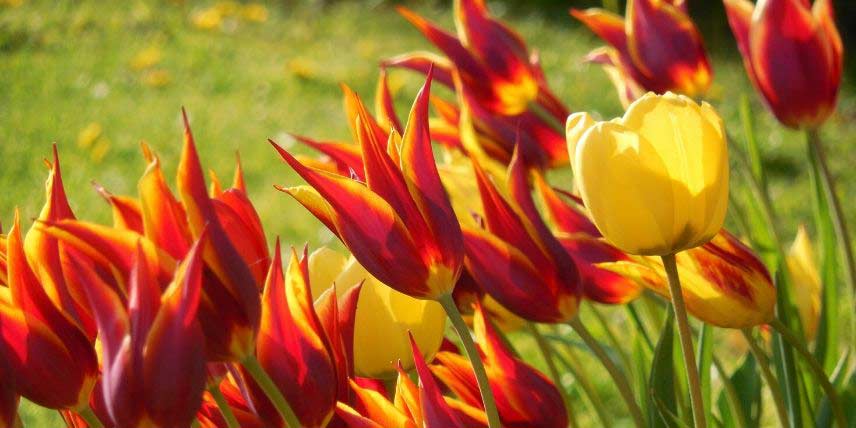
Step-by-step planting stages:
- Start by marking out area of bed to be planted.
- Using a spade, remove soil to a depth of about five times the height of the bulbs.
- Set aside soil removed, then mix in potting compost to enrich it and coarse sand for drainage.
- Replace a layer of this mix in the planting hole.
- Plant largest bulbs first. For a natural effect, you can mix them in a bucket and scatter them by hand into the hole. Always place them the right way up, point facing upwards.
- You can cover them with a little potting compost, then plant smaller bulbs above, cover again, repeat until reaching soil surface.
- Replace soil to original level and firm lightly, then water.
- Feel free to install markers, stakes or bulb labels to remember their positions!
See our video tips:
You can also plant your bulb collections in pots or containers. It’s a good solution that will give a colourful flowering display, ideal to brighten front of your house or your balcony. Choose a wide enough container, and plant bulbs at their correct planting depth. Plant in a mix of garden soil, potting compost and coarse sand.
- Subscribe!
- Contents
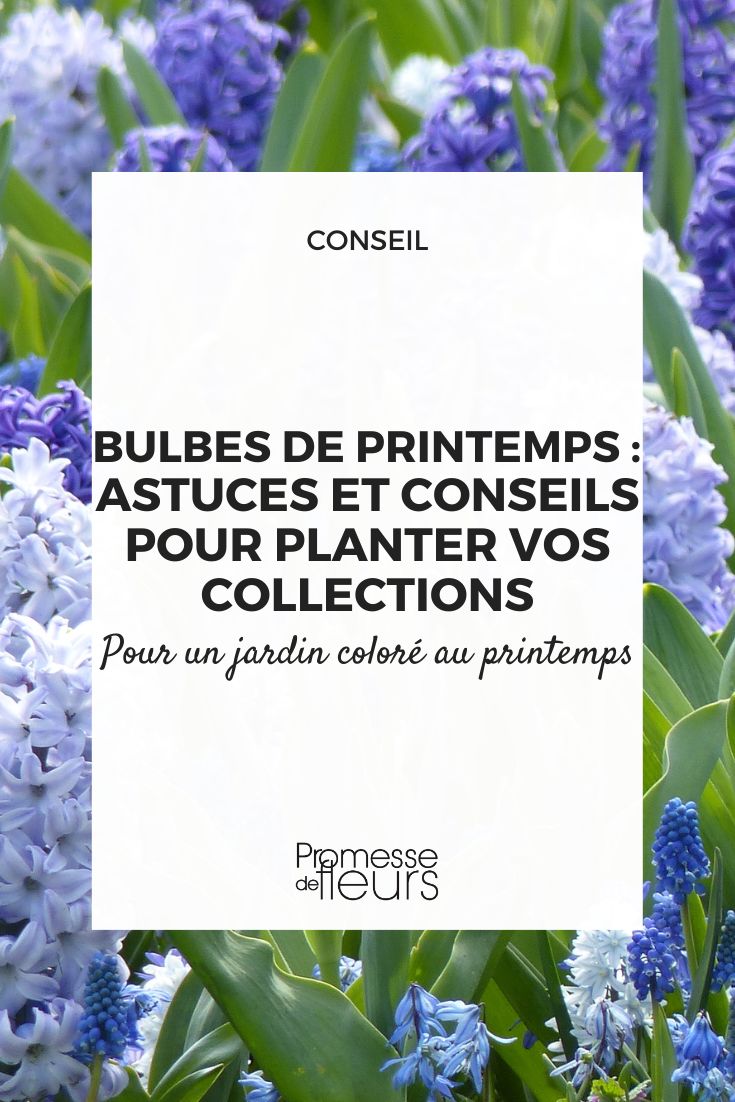































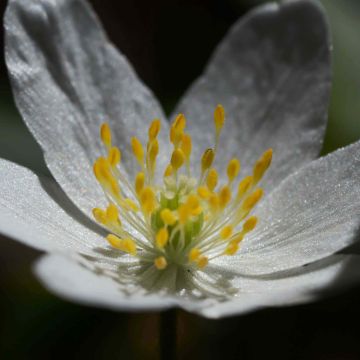

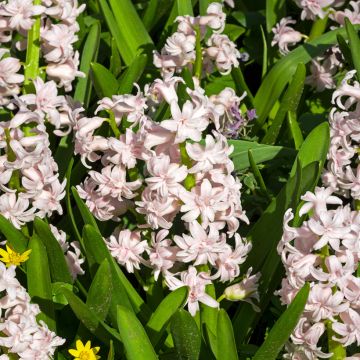
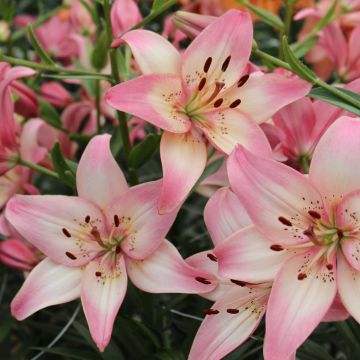
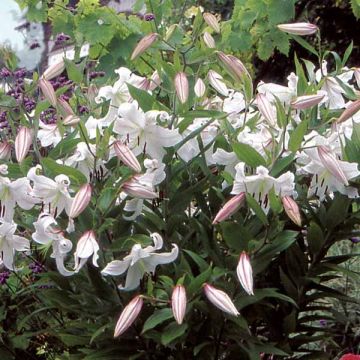
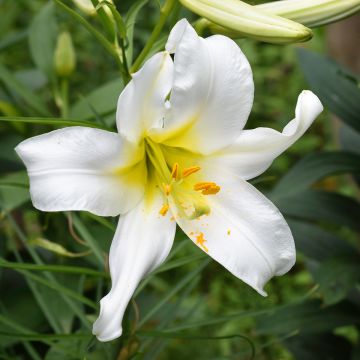

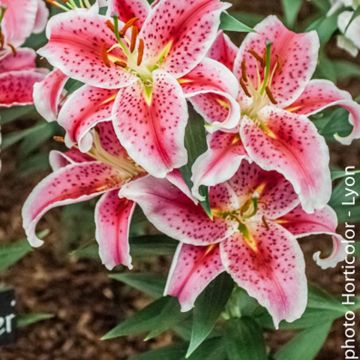
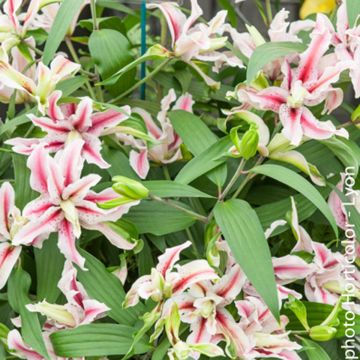
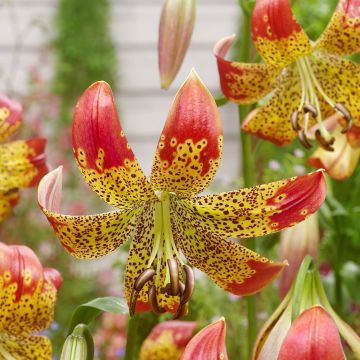
Comments